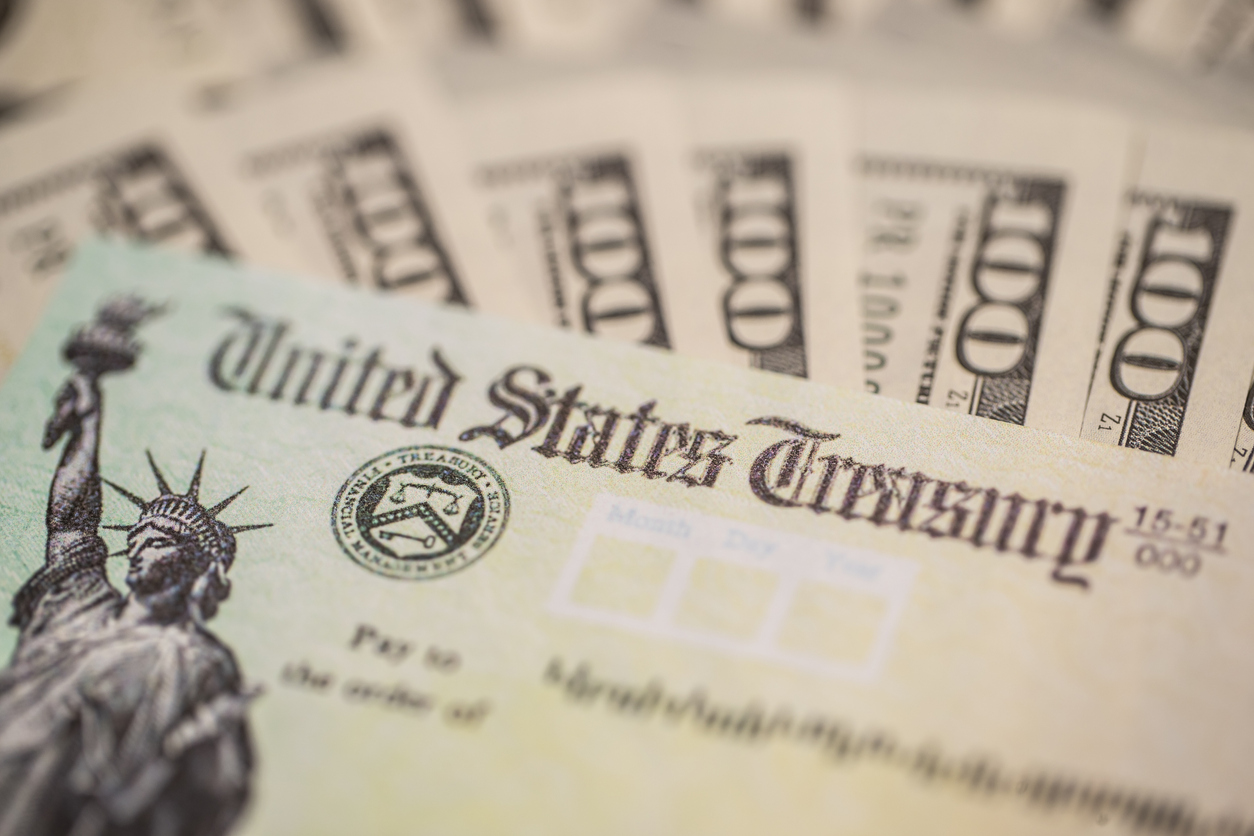However, experts predict that it could take at least two weeks for the Treasury to begin to get cash into people’s accounts once the legislation is signed. “The timing could be more challenging this time, but the IRS could likely begin to get the money out in January,” Howard Gleckman, a senior fellow at the Urban-Brookings Tax Policy Center, told CNN. Still, it’s unlikely that everyone who is eligible will see their stimulus checks come in in January. After the first relief package, it took the IRS about two weeks to begin distributing the stimulus checks and the process continued for months. Want to know more about the second coronavirus relief bill? Keep reading for answers to your most pressing questions, and for more updates from the White House, check out A White House Official Just Gave This Warning About the New COVID Mutation. Read the original article on Best Life. The economic relief bill is coming in at about $900 billion, according to The Washington Post, but the new round of stimulus checks for individuals will be $600. That’s half the amount of the first stimulus check that was part of the $2.2 trillion original CARES Act approved in March. And if you’re willing to make some big changes for more cash, check out The State Where You Can Make the Most Money. Similar to the first stimulus checks, only those earning below a certain amount will be eligible. According to Newsweek, Americans who earned less than $75,000 in 2019 will qualify for the full $600 stimulus check. Anyone who made over $75,000 in 2019 will receive a reduced payment, and Americans who earned over $99,000 in 2019 will not receive any support. Children are also eligible to receive the full $600 stimulus check, which is $100 more than they received during the first round of checks. You can calculate how much your household will get here. And to see how your state is doing with the vaccine, check out These States Are Getting Less of the COVID Vaccine Than They Were Told. If you want to get your stimulus check as soon as possible, you should make sure your bank information is on file with the IRS. According to CNN, the money will likely first be directly deposited to those who have that information set up.ae0fcc31ae342fd3a1346ebb1f342fcb If you’re receiving a paper check or prepaid debit card in the mail, you will likely have to wait at least a few extra weeks. According to Newsweek, the Treasury has the capacity to mail out up to 7 million paper checks per week. After the first relief bill was passed in late March, the Treasury “started mailing out paper checks in mid-April, beginning with low-income families earning less than $20,000 annually,” the outlet reports. Then, the debit cards were mailed out starting in mid-May. And for further updates on the stimulus bill, COVID, and more, sign up for our daily newsletter. In addition to a second batch of stimulus checks, the new relief package includes more benefits for those who are unemployed. According to CNBC, anyone using Pandemic Unemployment Assistance (PUA) to access unemployment benefits and the long-term unemployed using the Pandemic Emergency Unemployment Compensation benefits will now qualify for an additional 11 weeks of payment through Mar. 14, 2021. The package also provides an extra $300 per week to those receiving unemployment, also through Mar. 14, 2021. The bill also provides more Paycheck Protection Program (PPP) loans for small businesses and extends PPP eligibility to nonprofits and local newspapers, TV, and radio broadcasters, according to CNBC. Additionally, the bill extends the nationwide eviction moratorium until Jan. 31, 2021 and includes aid for child care providers and K-12 schools and colleges. And for more on the latest with the pandemic, check out This Is Why Dr. Fauci Hasn’t Gotten the Vaccine Yet.



